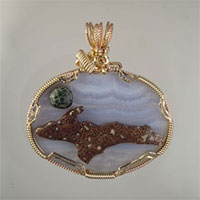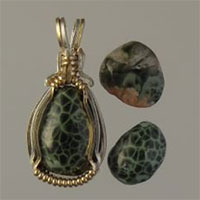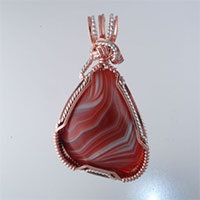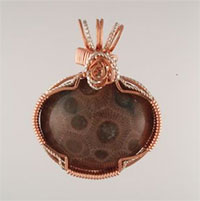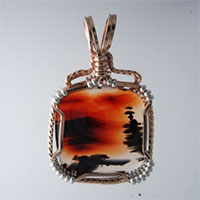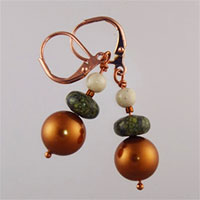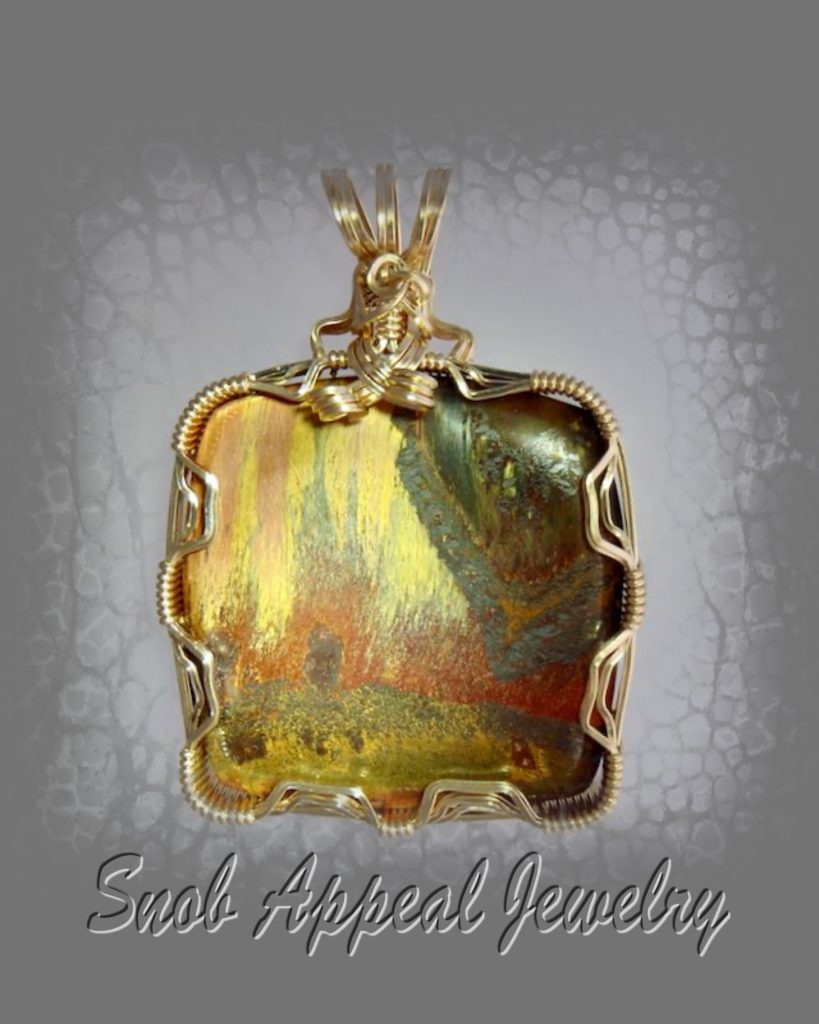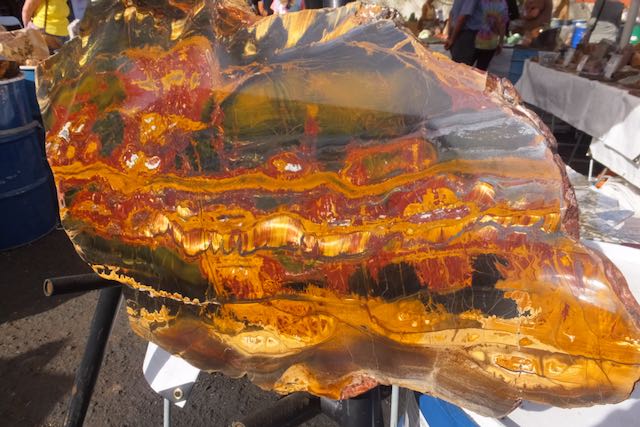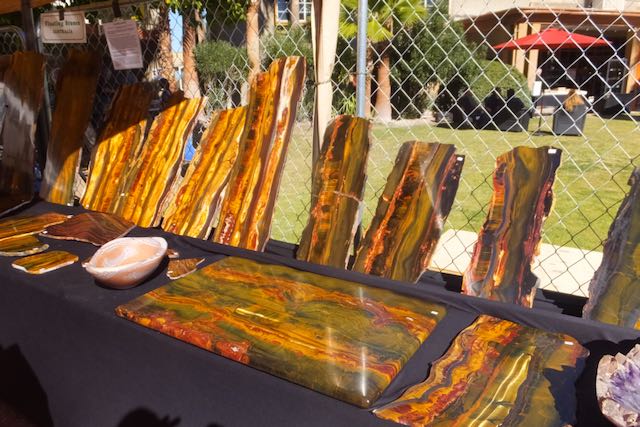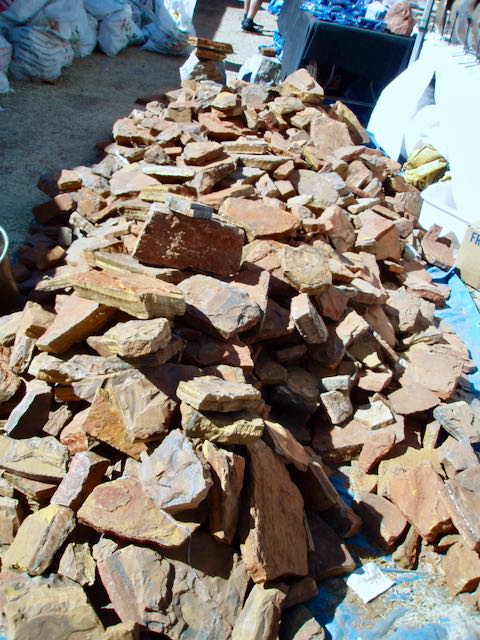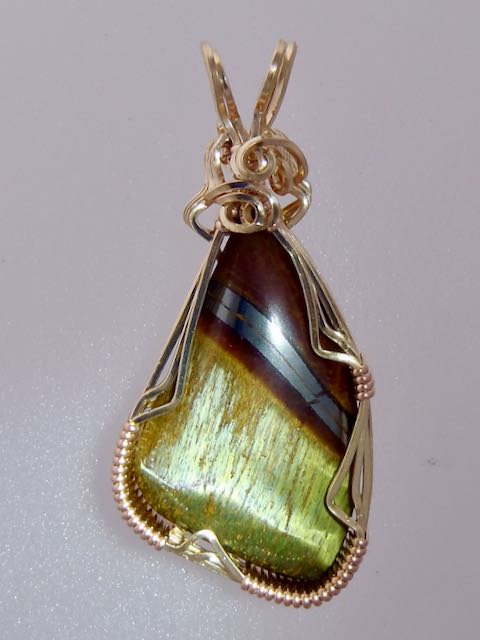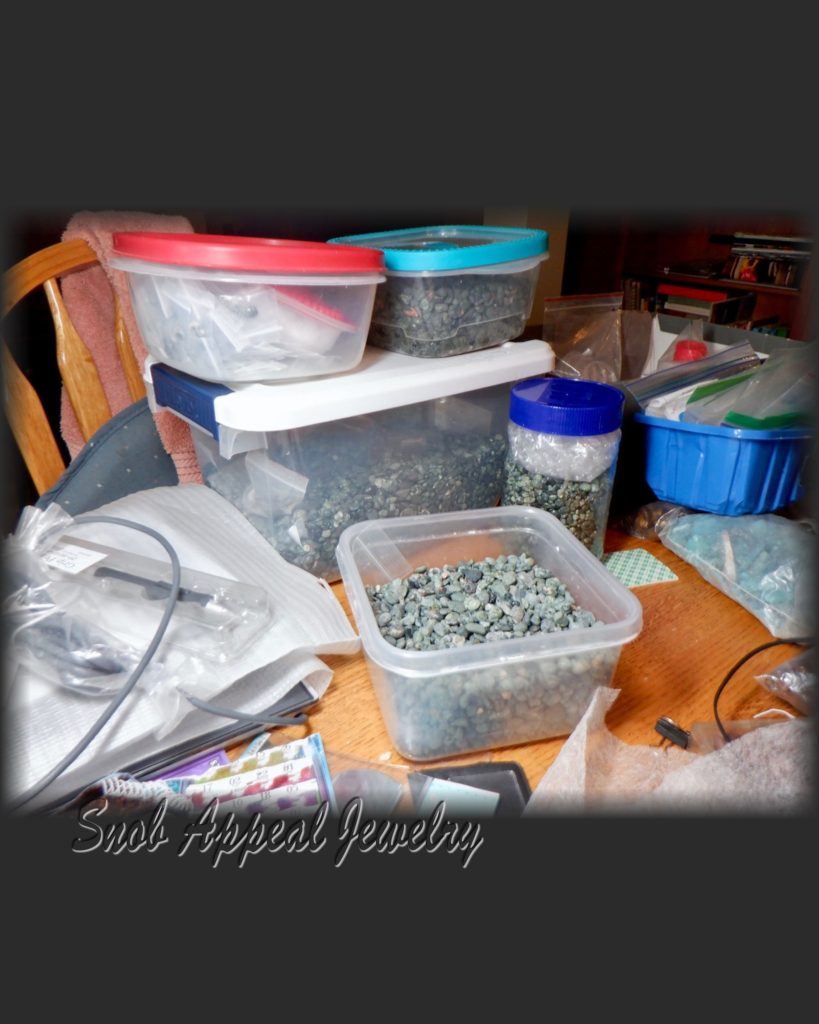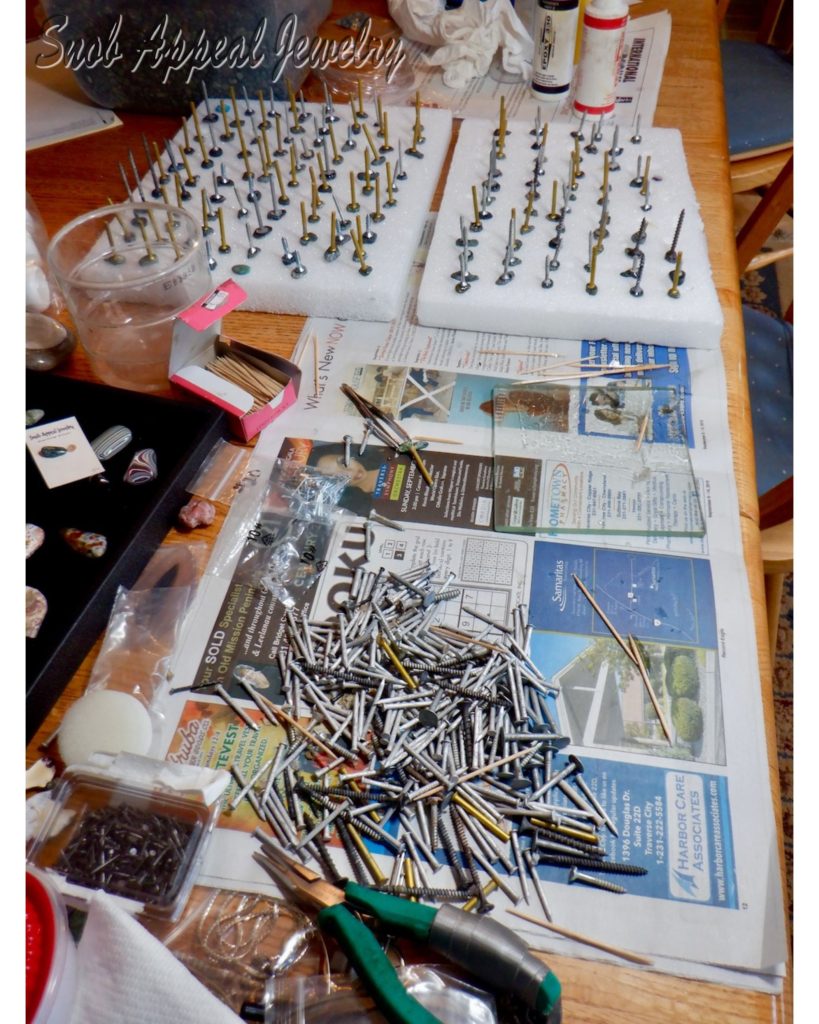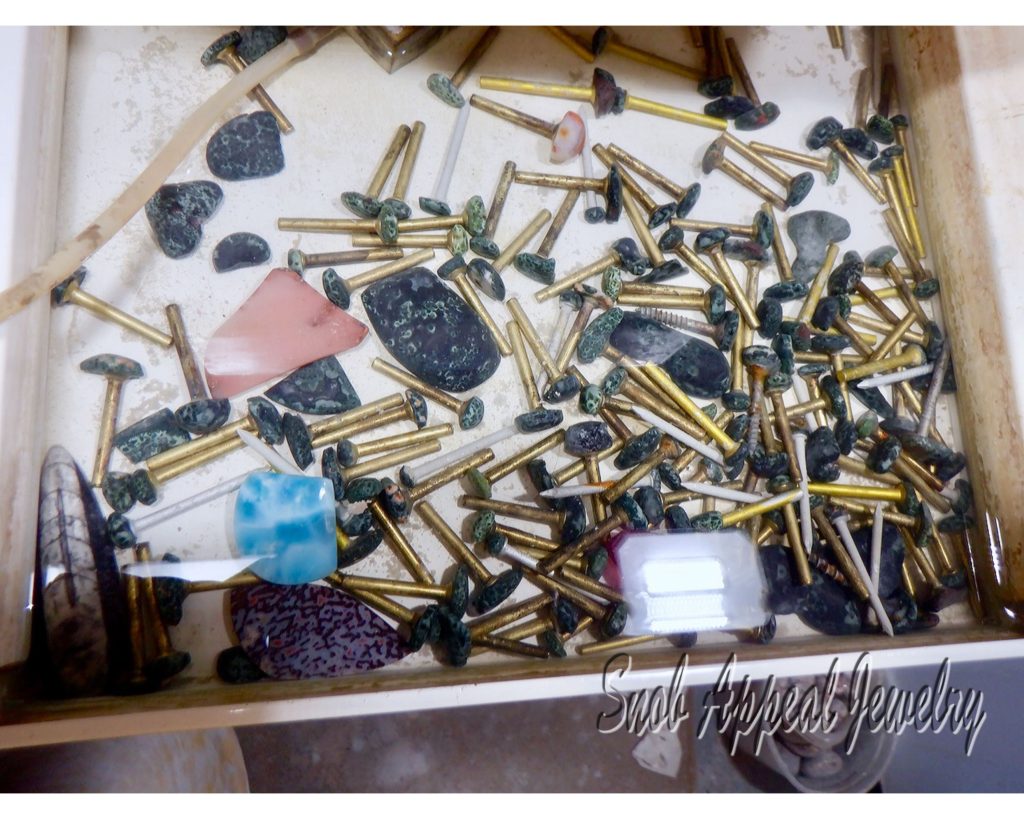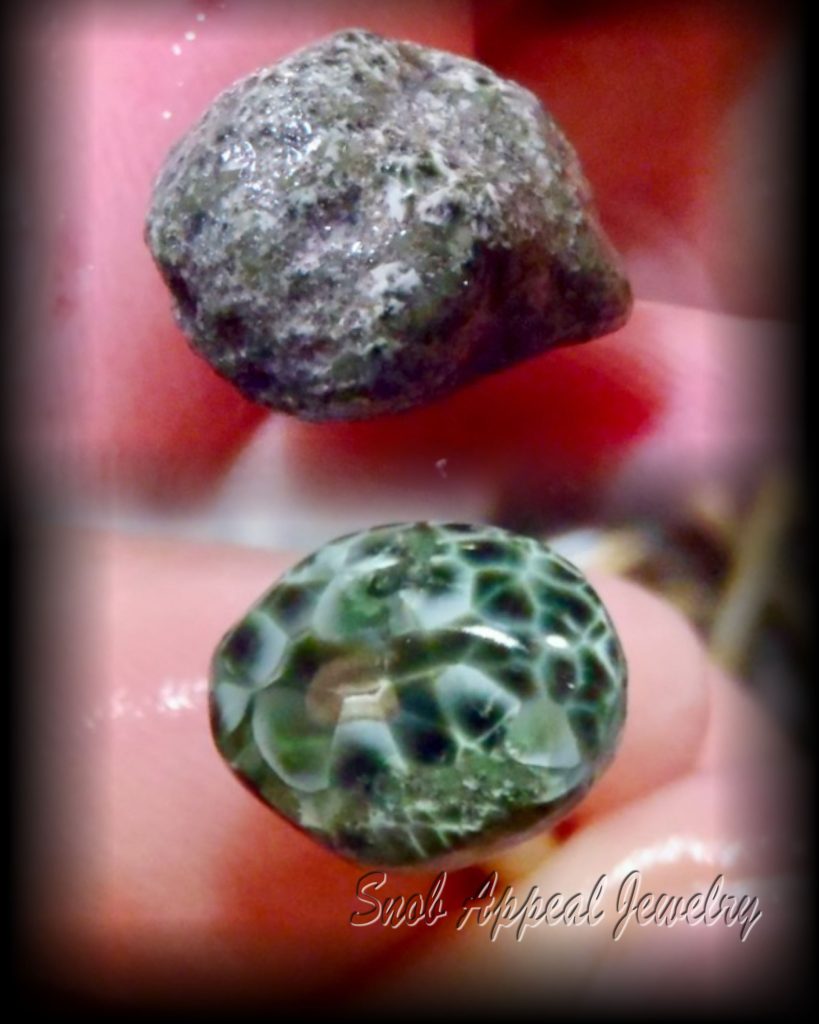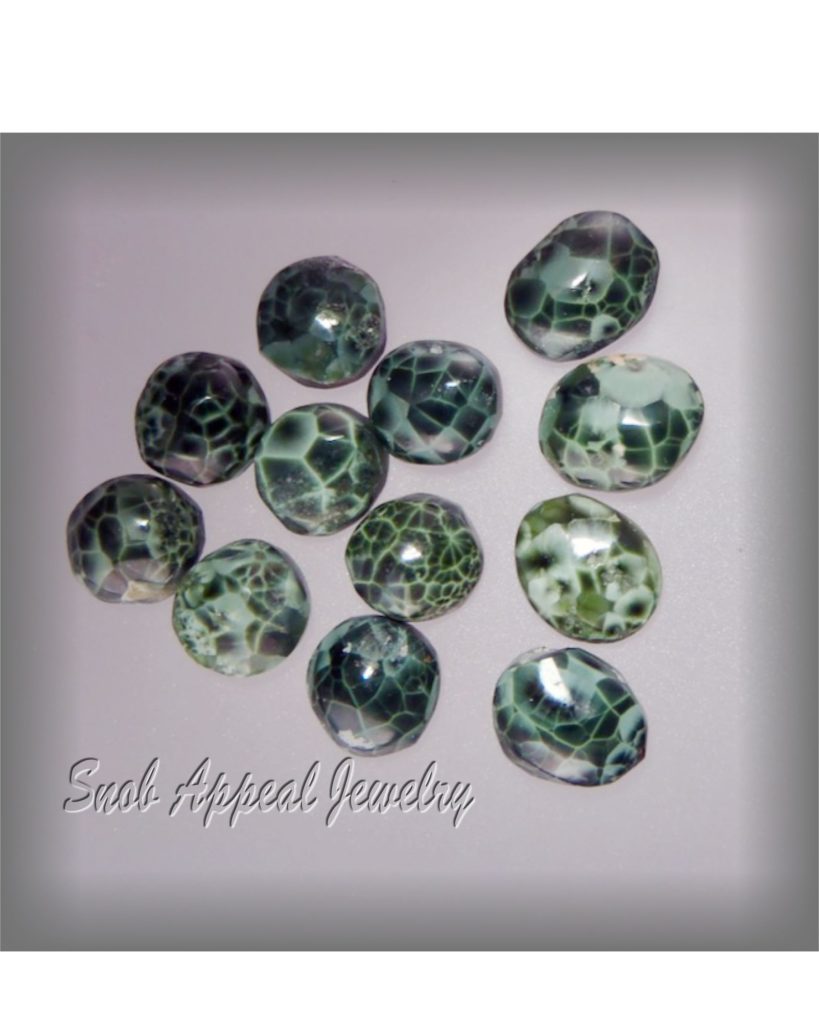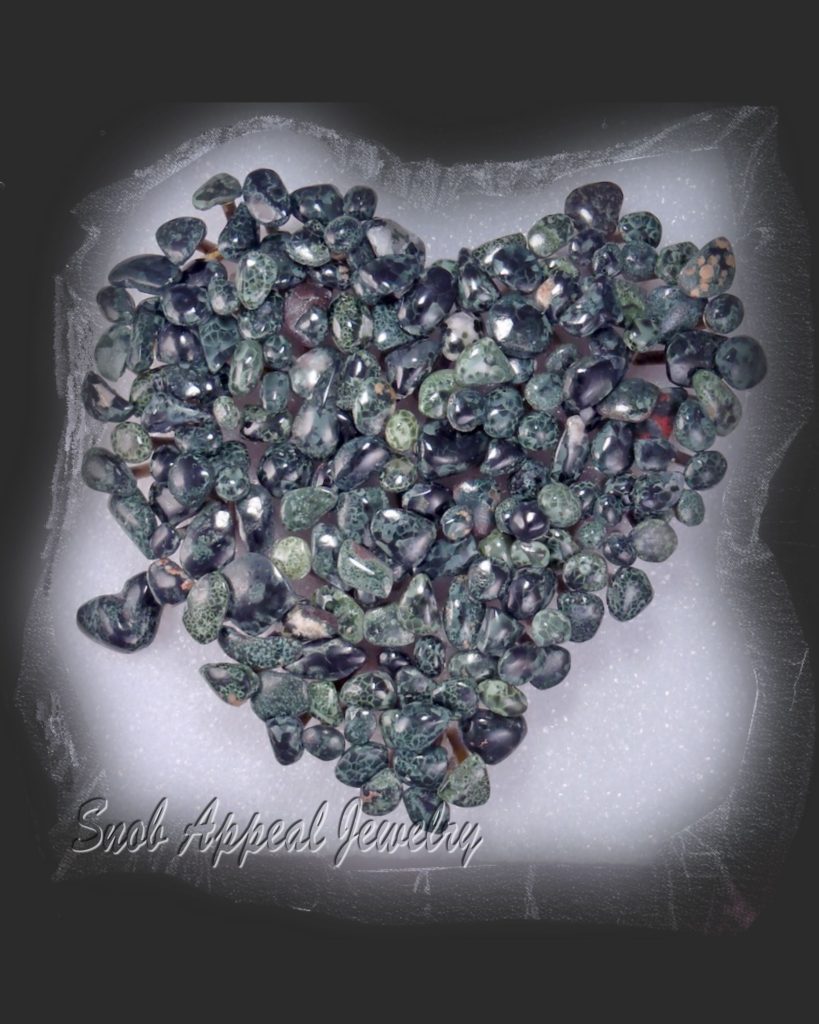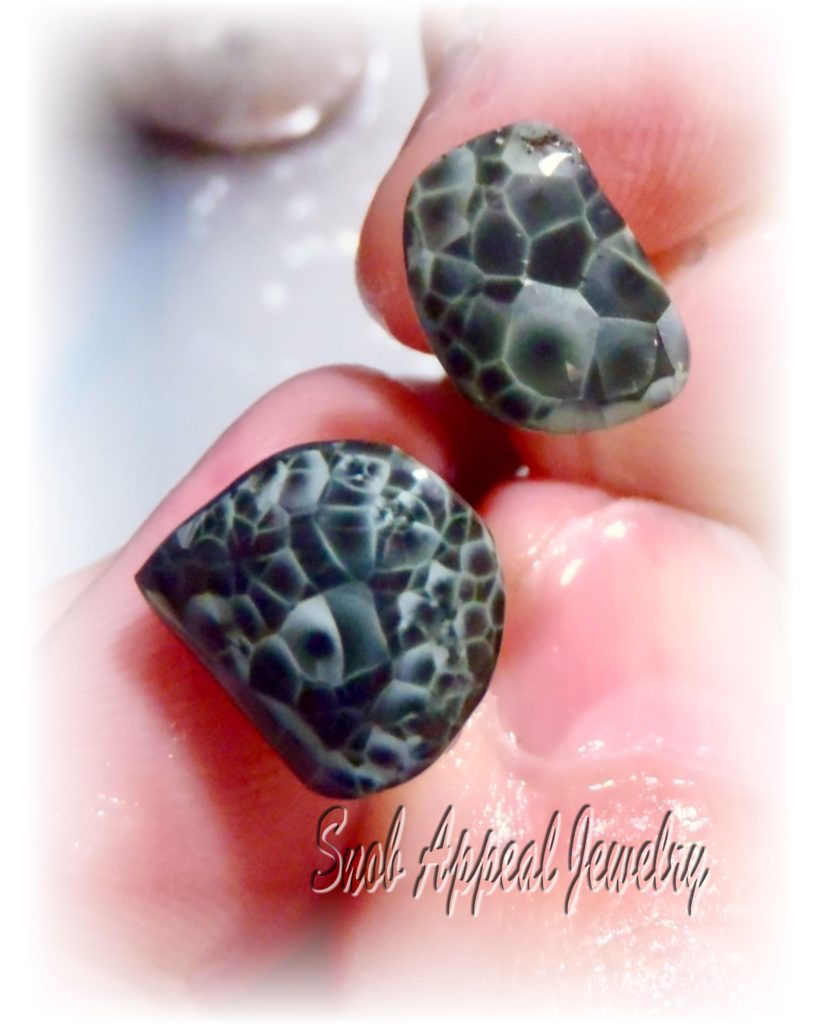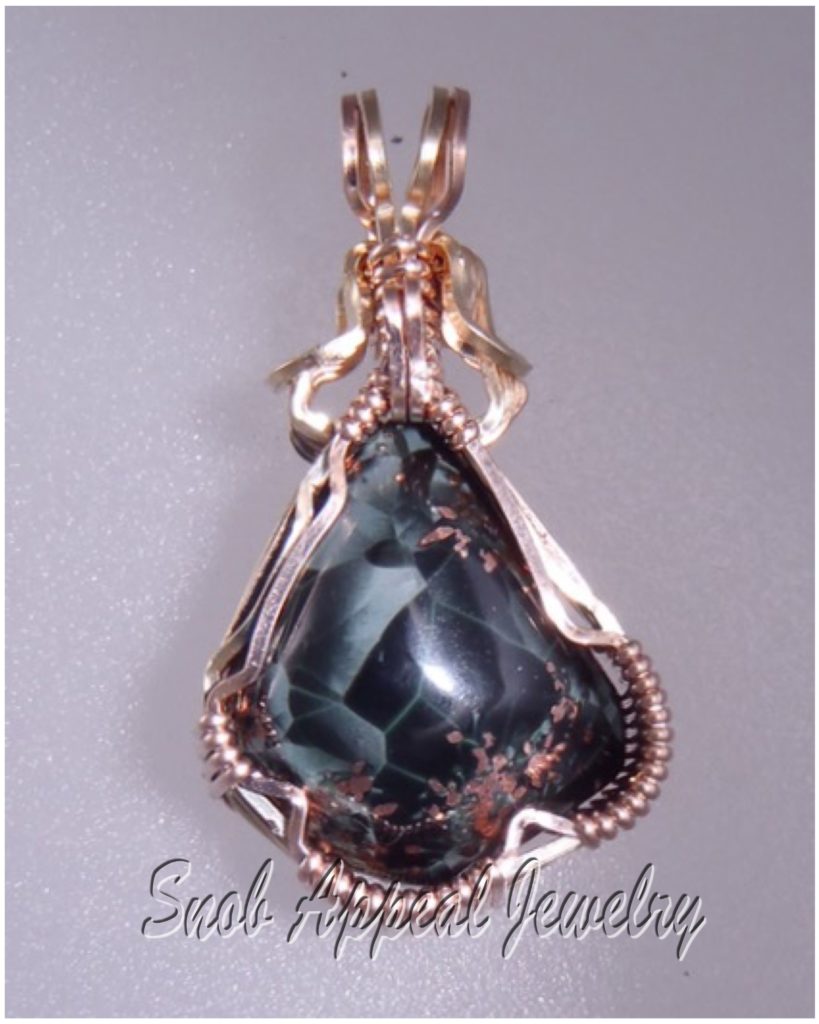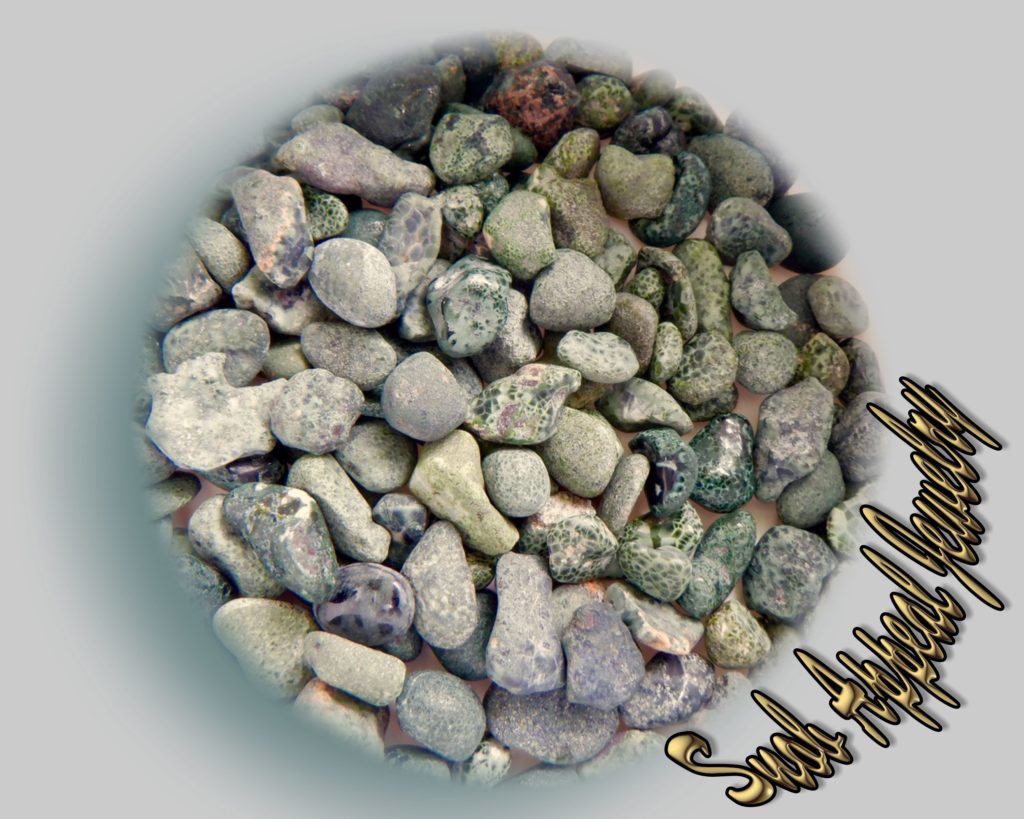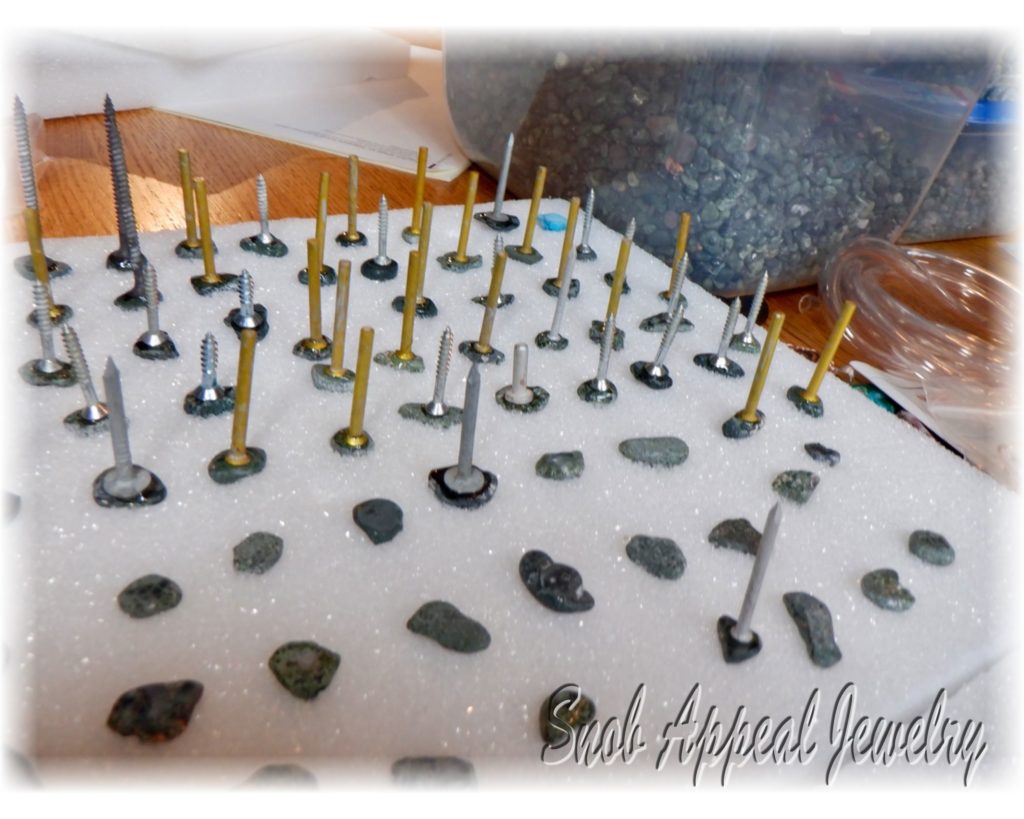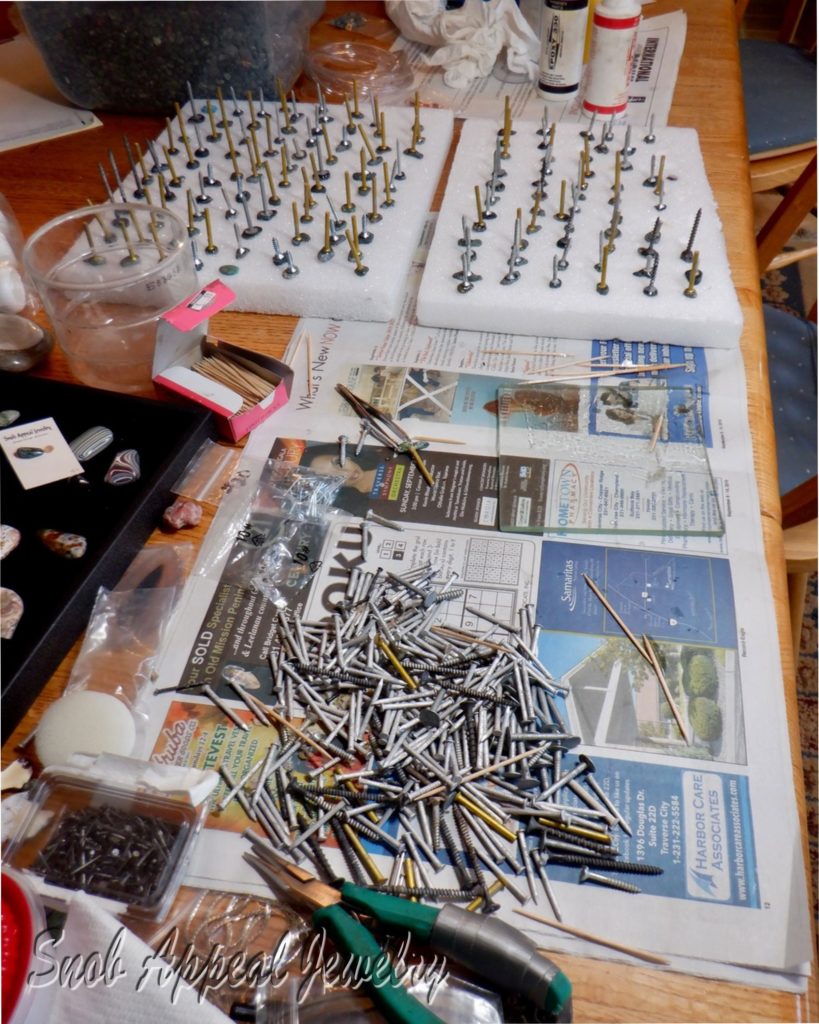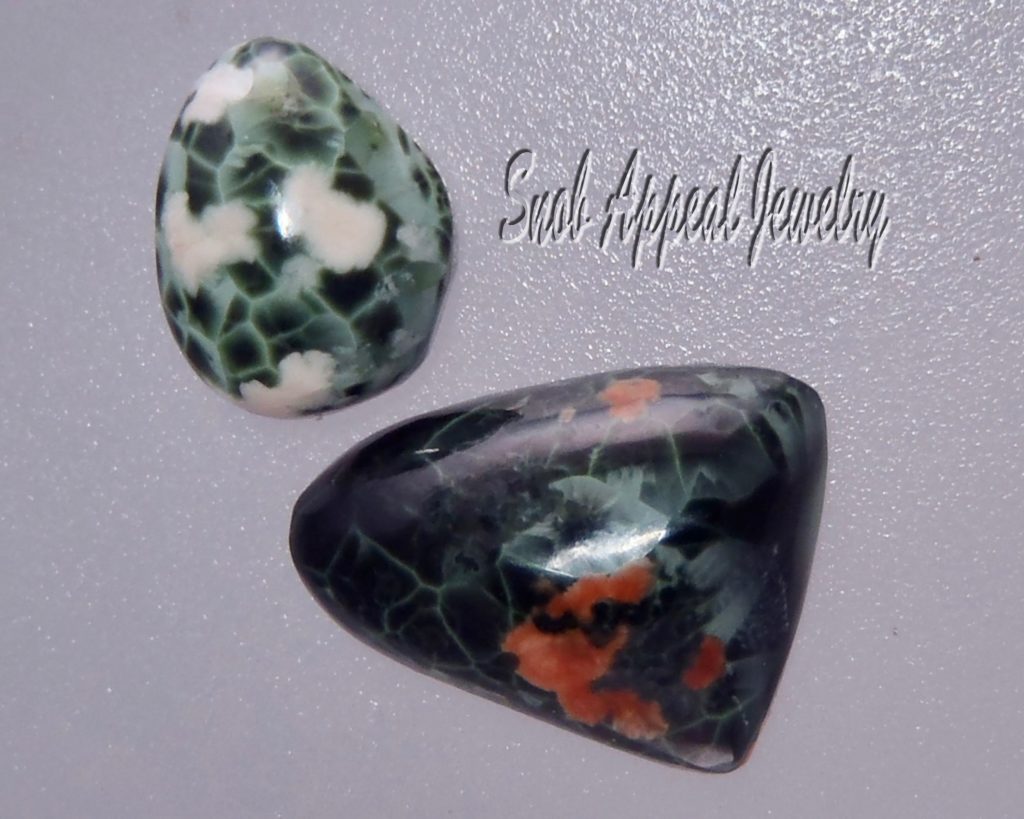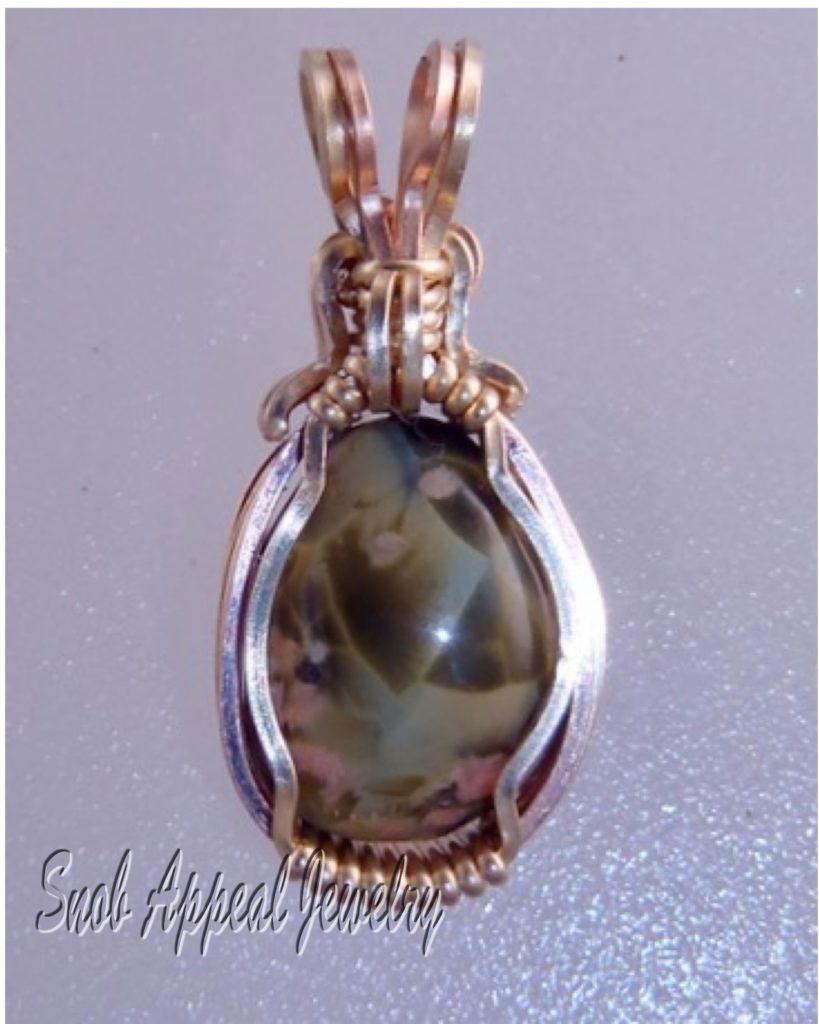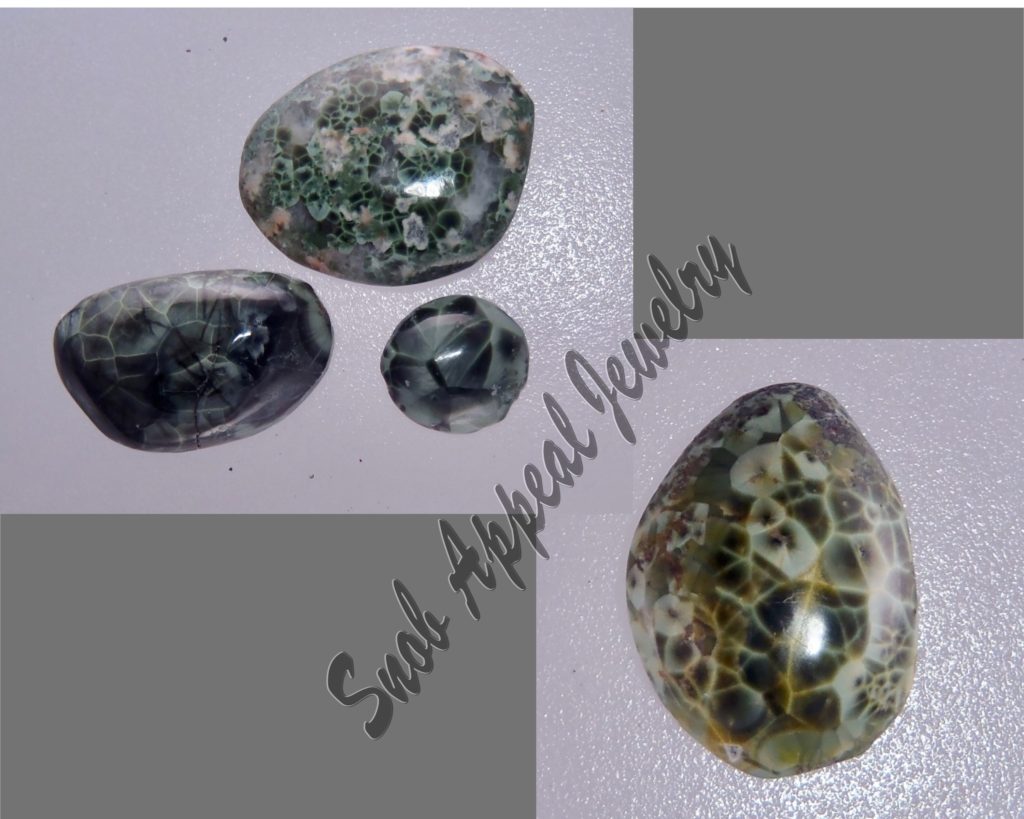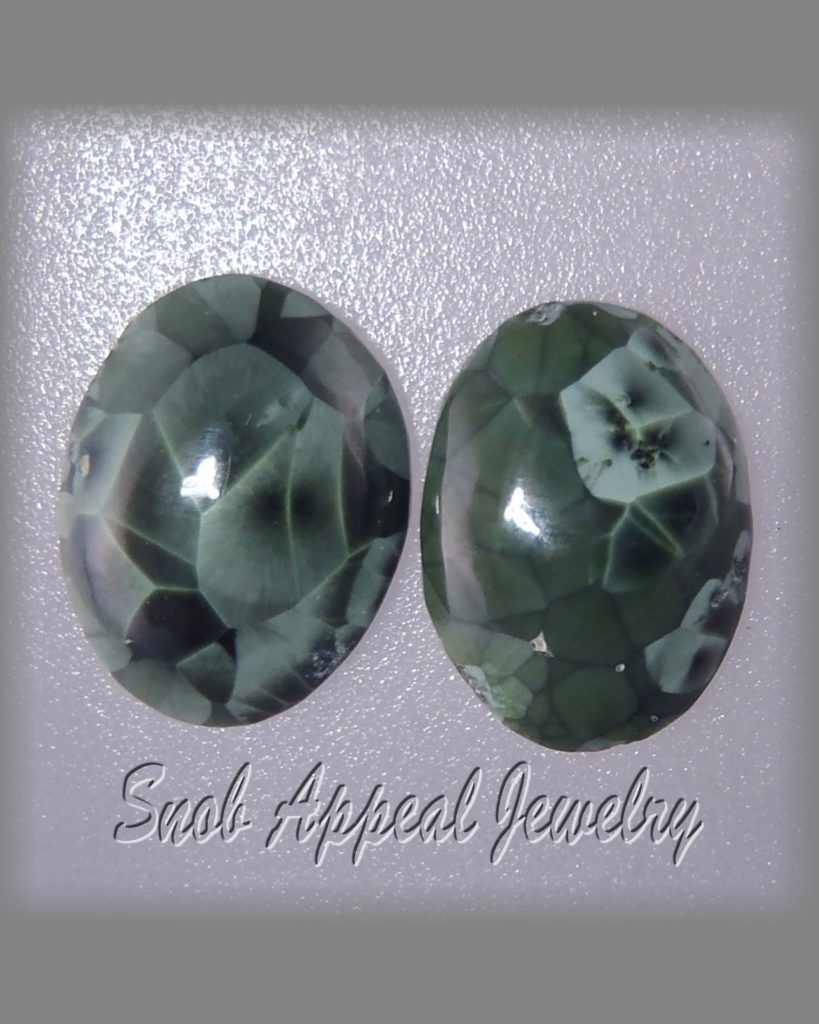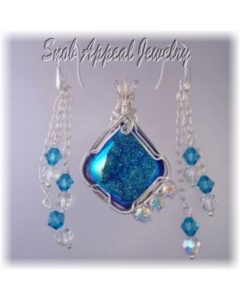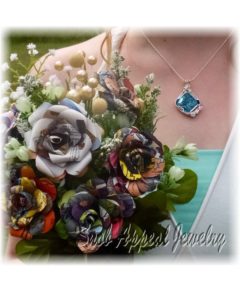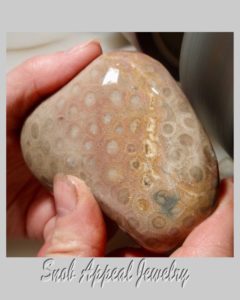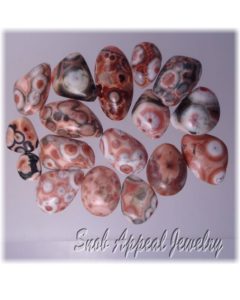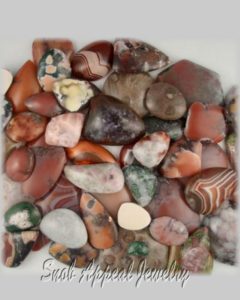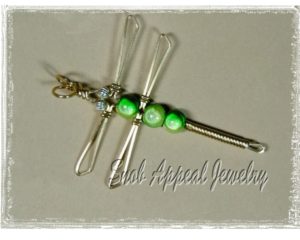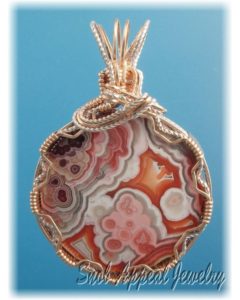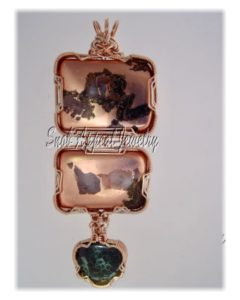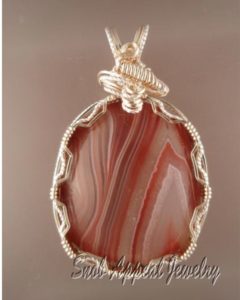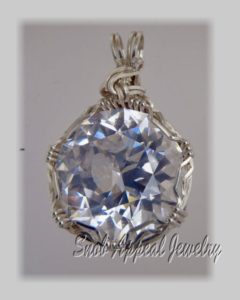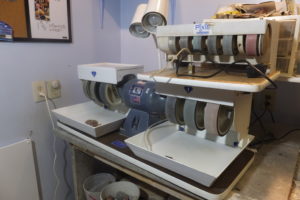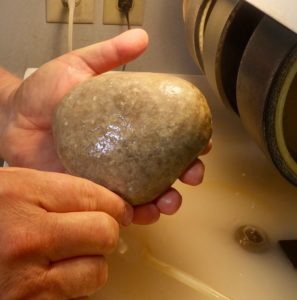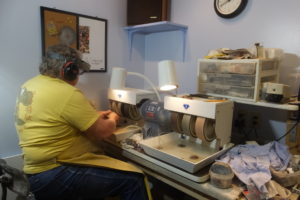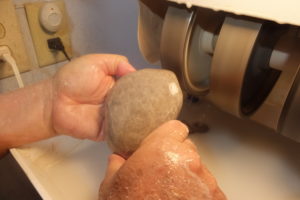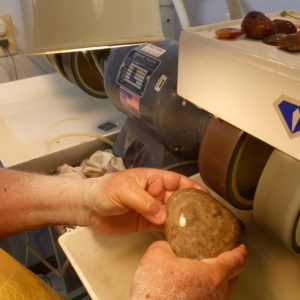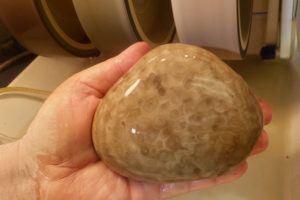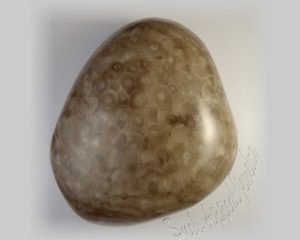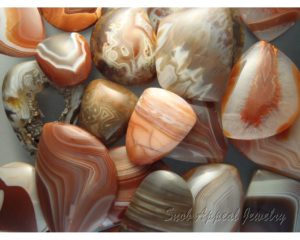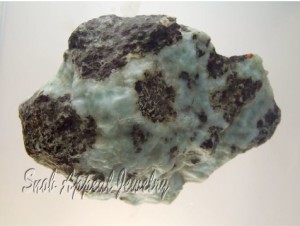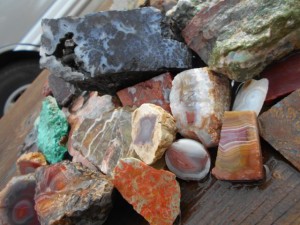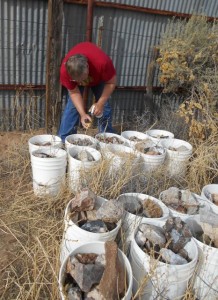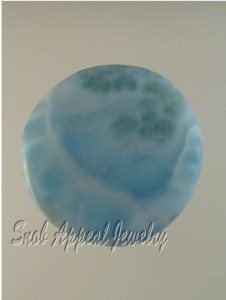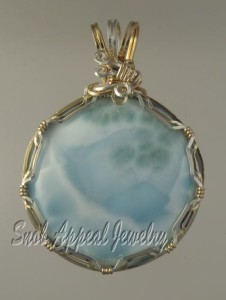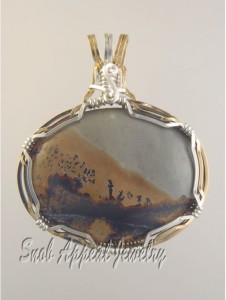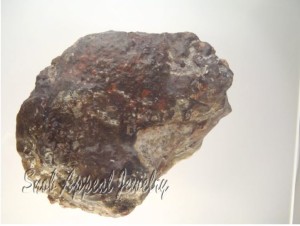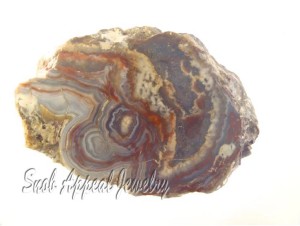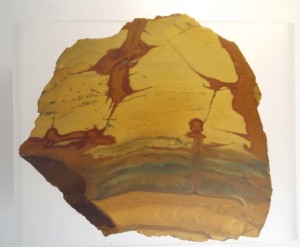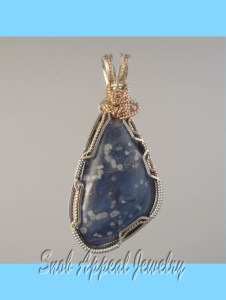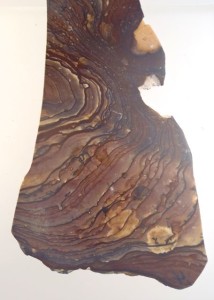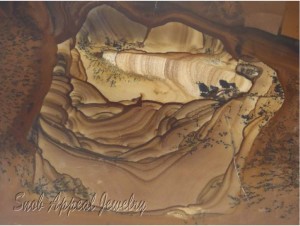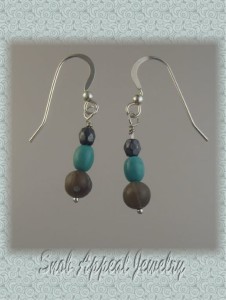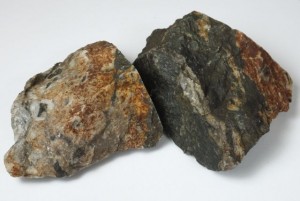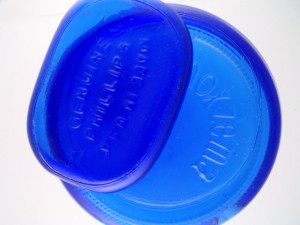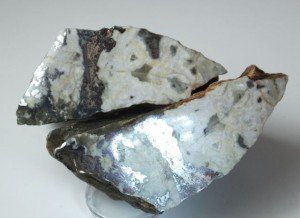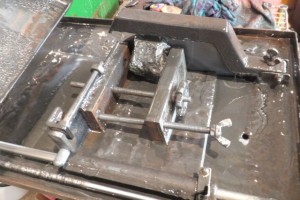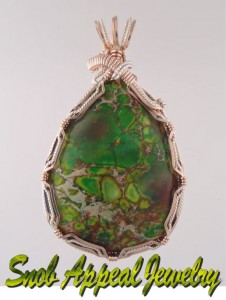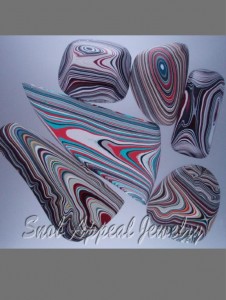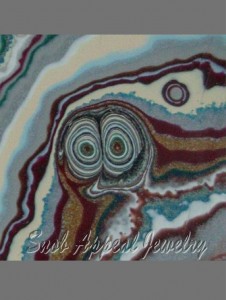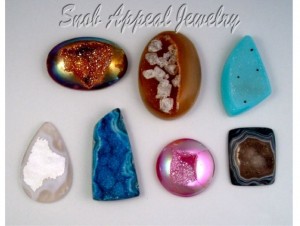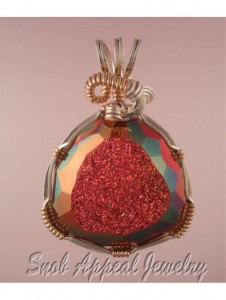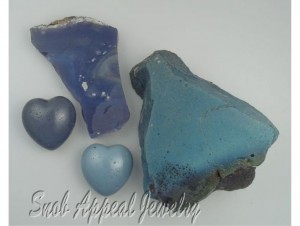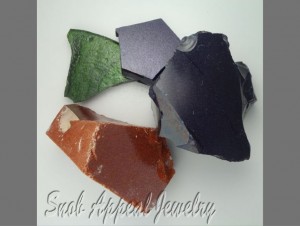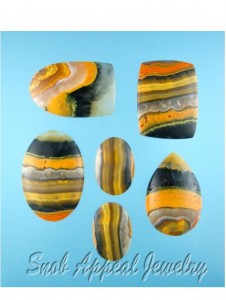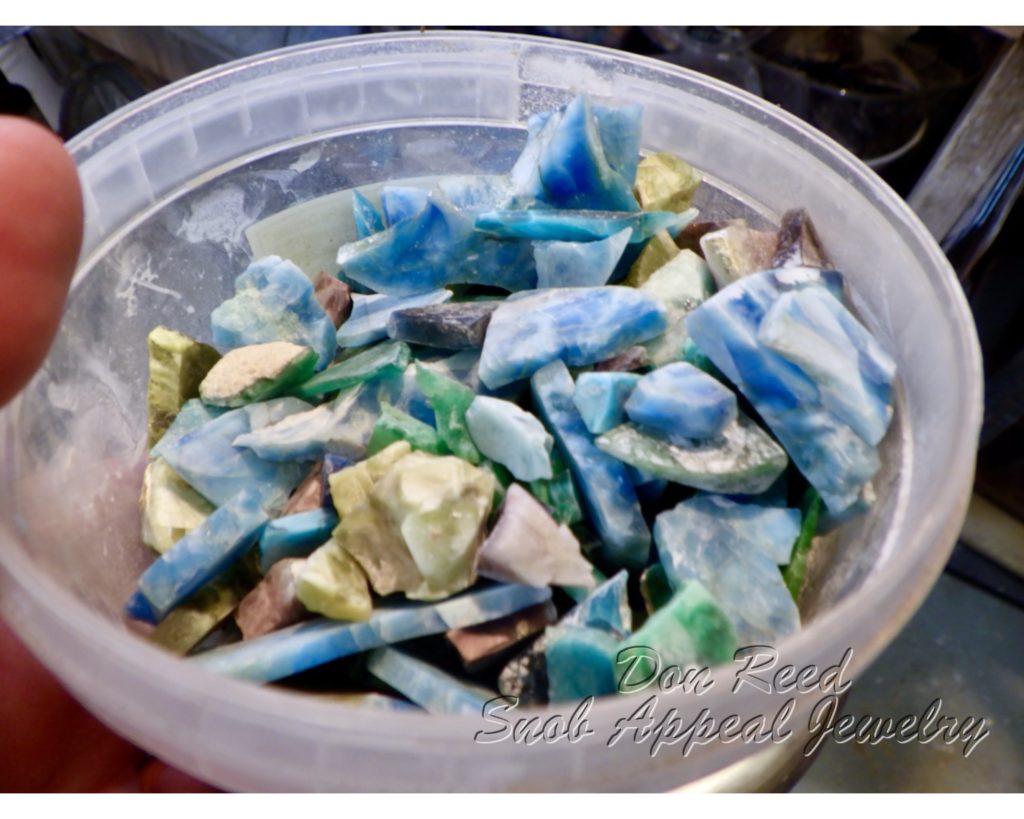
Imagine my delight and surprise when some old Victoria Stone was uprooted in my shop!
Out of all the blogs I’ve published in the past decade, my blogs on Victoria Stone stay consistent in their’ popularity. Victoria Stone was a man-made material, manufactured by Dr. S. Iimori in Japan in the mid-60s. At that time this beautiful, chatoyant material was marketed as Iimori Stone. Within a couple years the name of Iimori’s creation, started selling at the Tucson Shows as Victoria Stone. Victoria Stone was a hot seller, and a renowned lapidary material through the mid 60s to around 1980.
Victoria Stone Boules
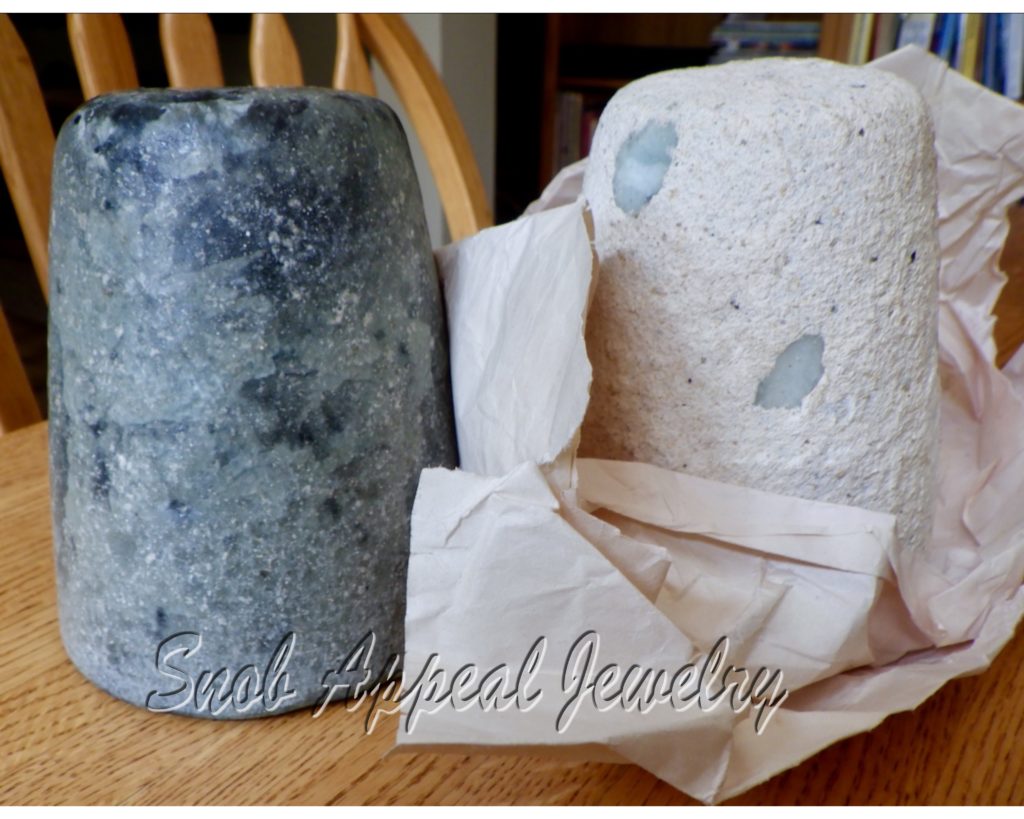
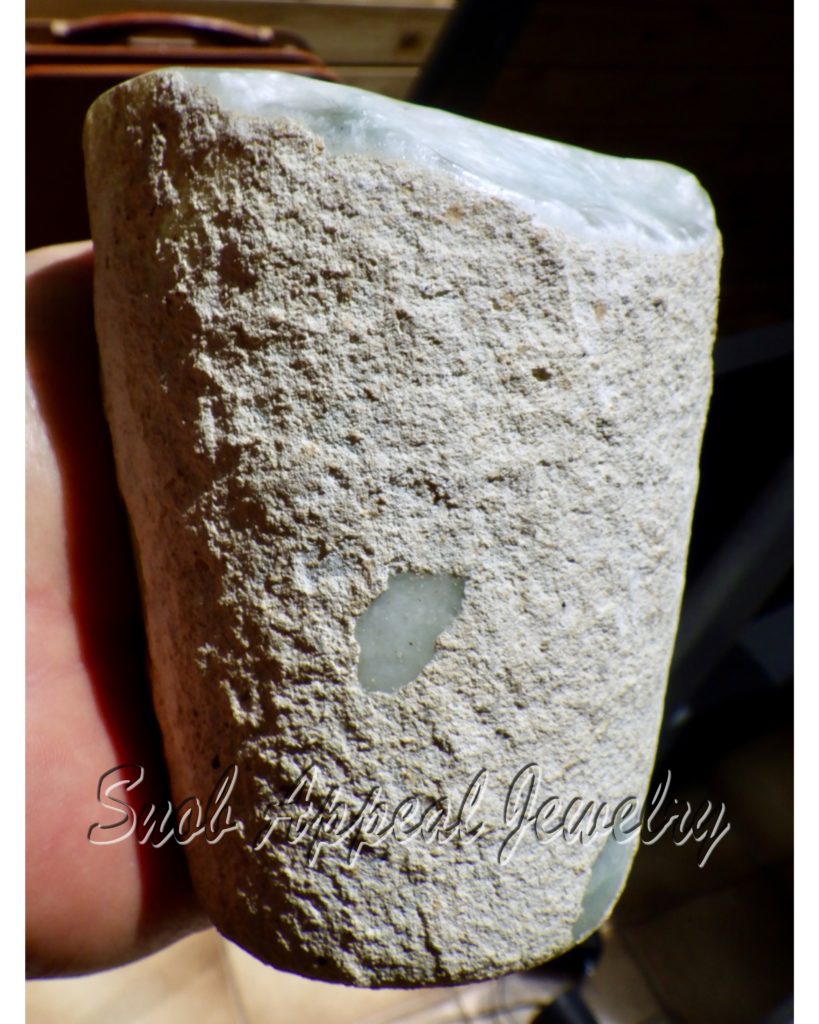
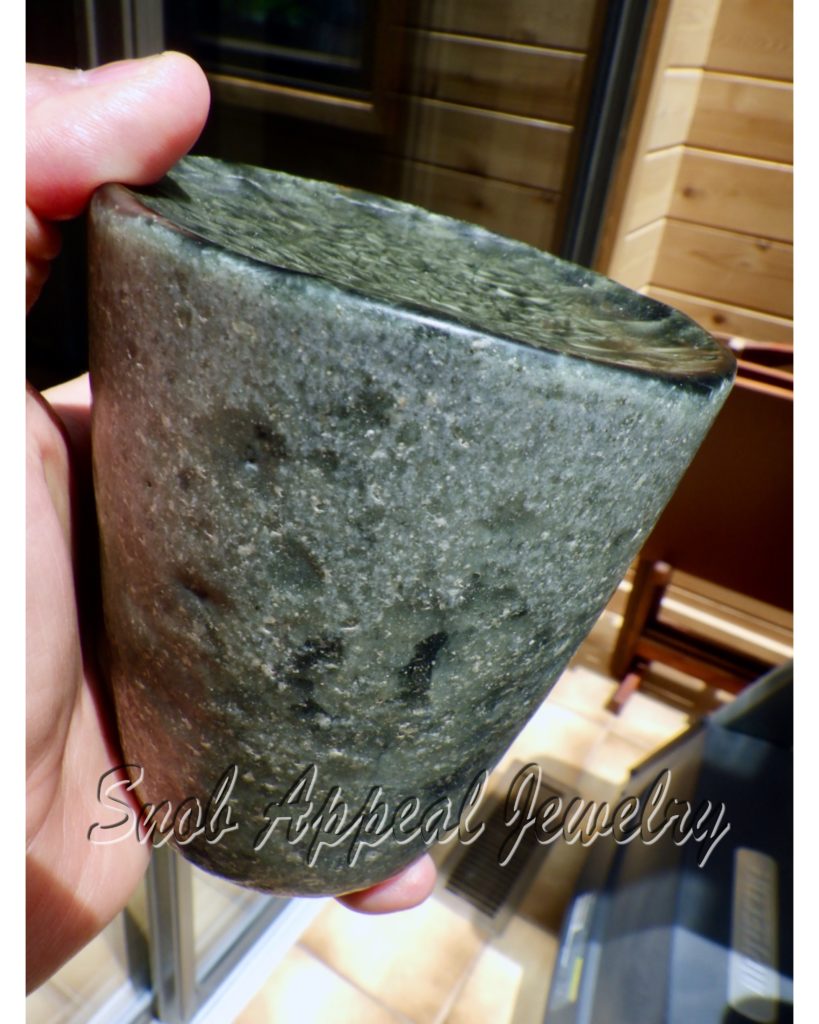
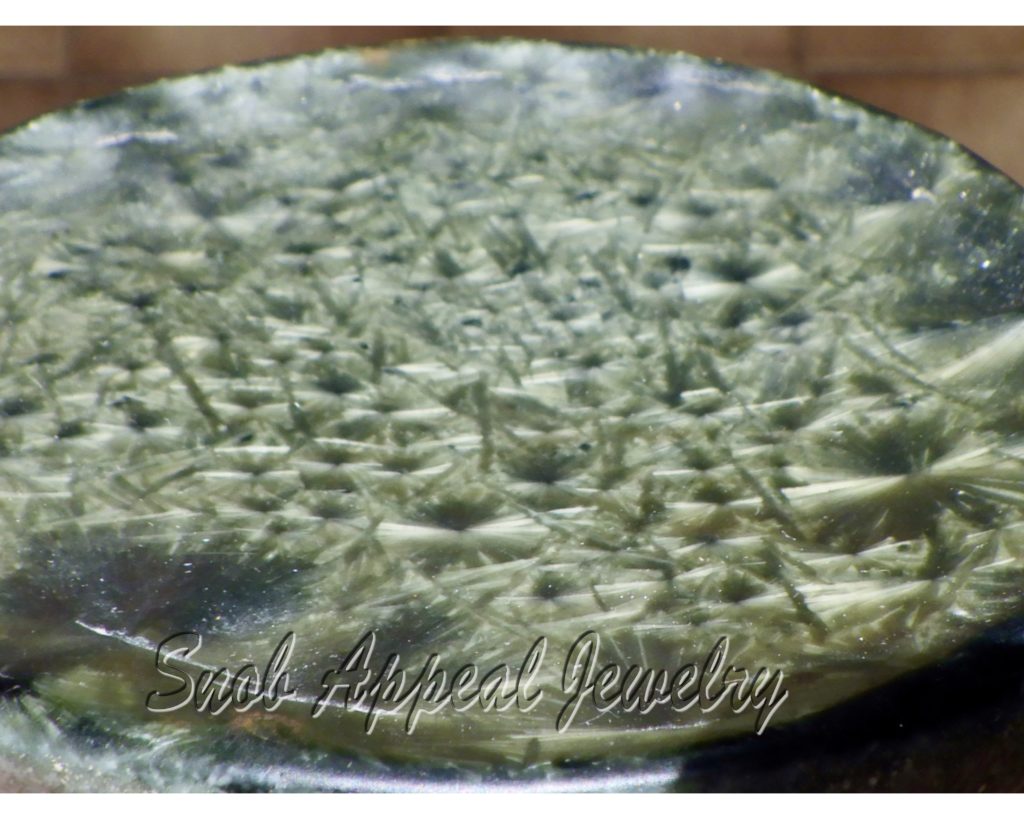
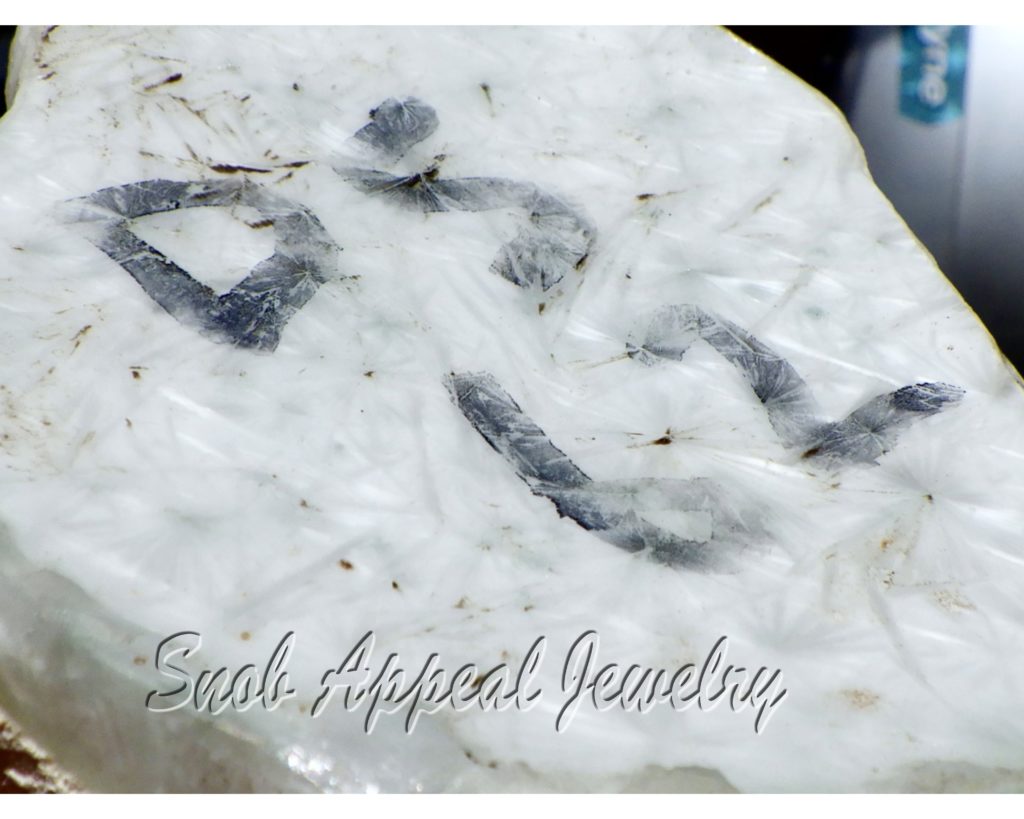
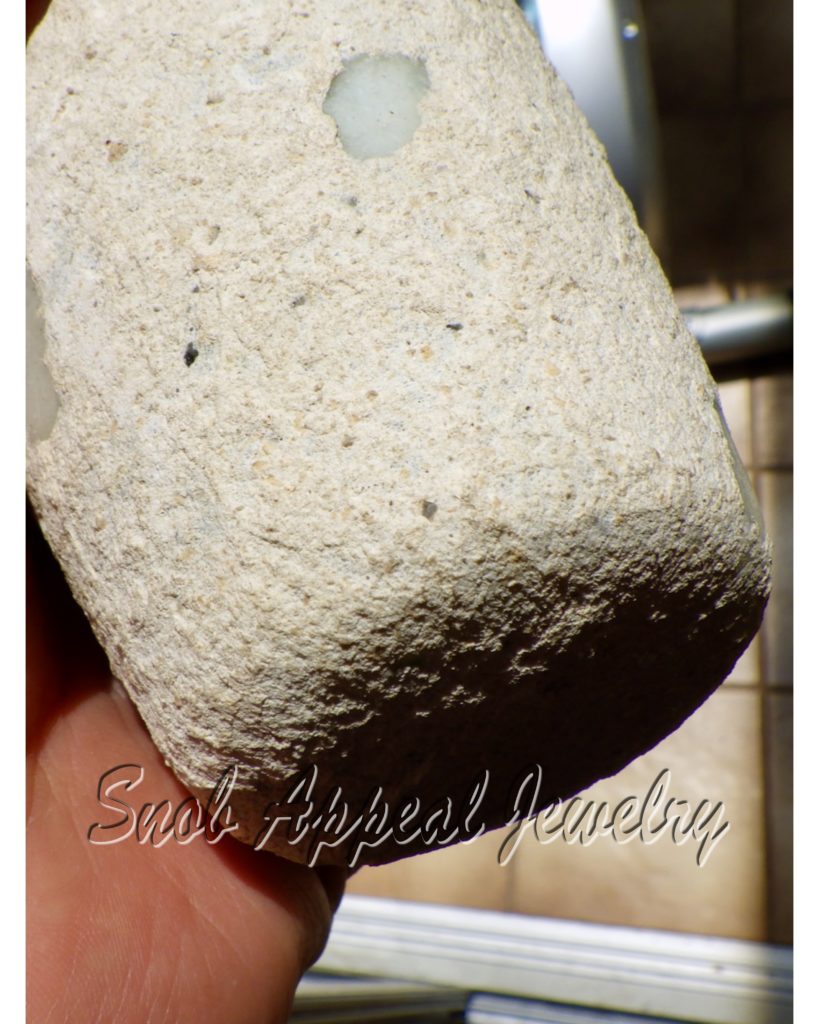
The process of manufacturing Victoria Stone was similar to making glass. Molten material was poured into vessels, called Boules. The boules were approximately. Boules were tapered like a glass, larger at the top with a bowl-shaped bottom. A glass like material was used as a releasing agent for the boule after it was cooled and dried (this liner material appeared like a glass-plaster on the boules, and had to be ground off before the boules were ready for cutting into slabs). The top of the boules showed shrinkage, and became slightly depressed. The top also displayed unique crystallization. My understanding is that the cooling and drying process had to be very precise, or the Victoria Stone would not be useable. Many hours were involved in this slow cooling of the boules.
For a very long time, slicing my two boules has been on my to-do list. I think I have just been fearful (OK chicken) of cutting these boules. When I do, I’m going to produce a Youtube video of cutting them. I first have to carefully “peel” my white boule (and this also is a concern).
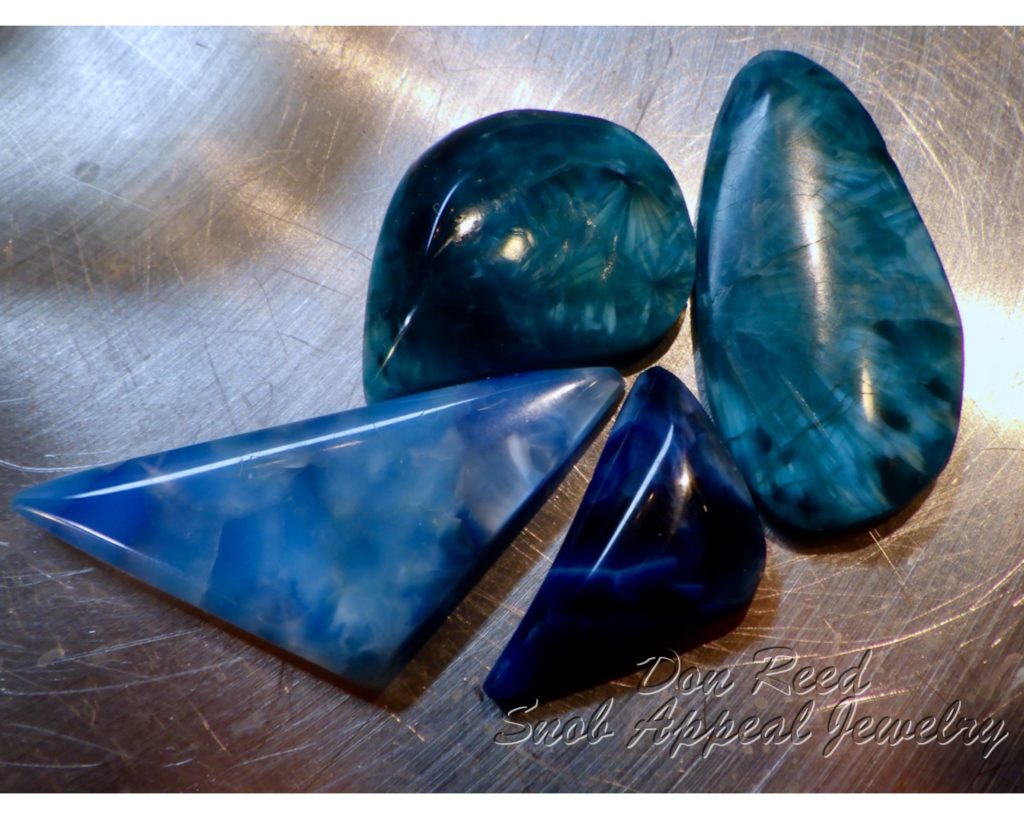
Iimori passed away around 1980, and for various reasons Victoria Stone soon passed into history. You can read about some of the history I’ve pieced together in my blog article Victoria Stone (aka Iimori Stone). Also see Victoria Stone-The New Research and old Color Chart
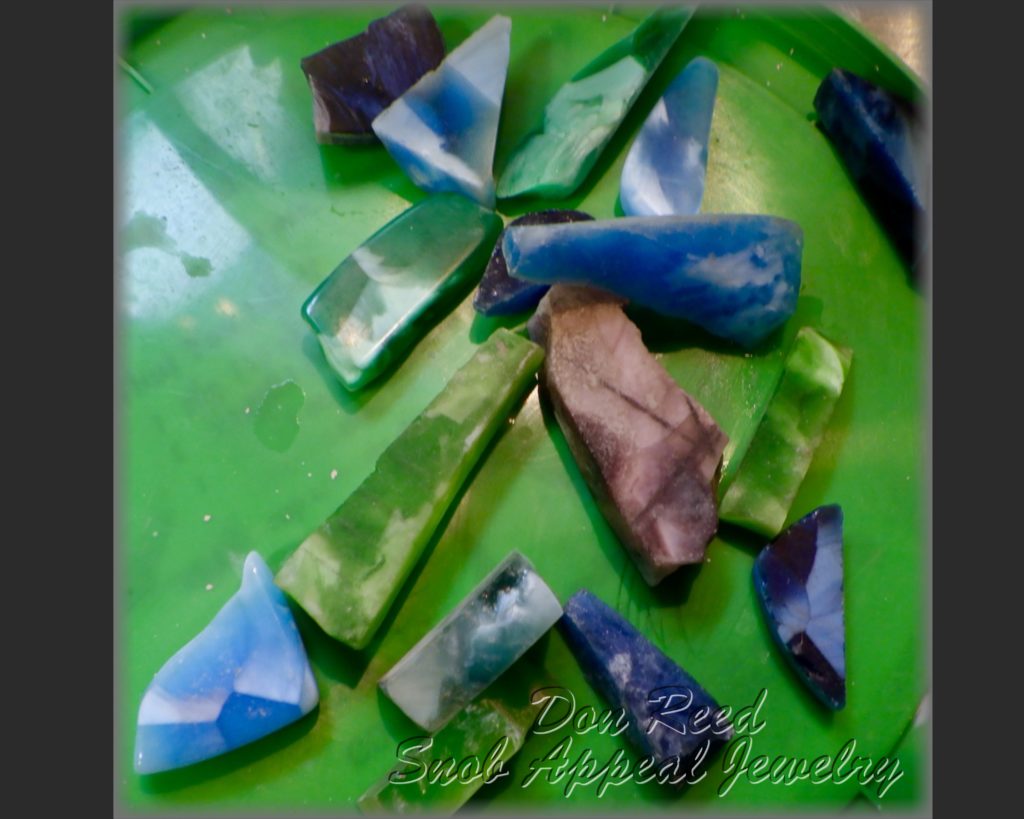
Over the years several attempts have been made to duplicated Victoria Stone, with little success. Only recently have makers come close. It has been a real challenge over the years to create a Simulant of this Simulant. I admit that some of these simulants are wonderful, but no-one has duplicated the classic, original Victoria Stone.
Let’s get back to my Victoria Stone Surprise.
I am genrally totally unorganized in my shop. Bonnie (wife) occasionally will decide she is going to “straighten up” my area. She can’t help that she is a retired librarian. To be honest, she has accomplished wonders. One of her recent finds was a container of Victoria Stone scraps that I have saved. These “scraps” were saved for making earrings or rings at some point. I actually have looked at that small dish; thinking “I should do something with those scraps”.
The other day, I rooted through those small pieces of Victoria Stone, and to my delight and suprise, there were larger pieces of nice Victoria Stone, UNDER all those small pieces. These were large enough to make into pendant cabs. About half the slabs were cracked and crazed (Victoria Stone often gets that way), but a half dozen were still in amazing condition.
Don gets excited
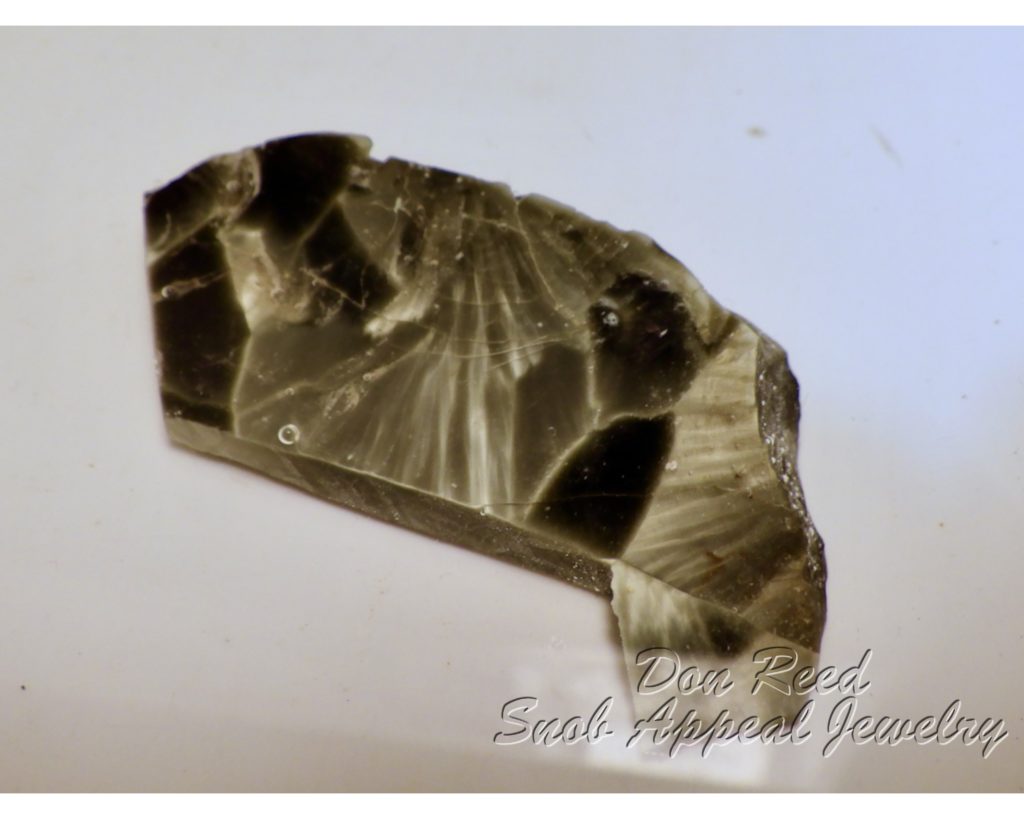
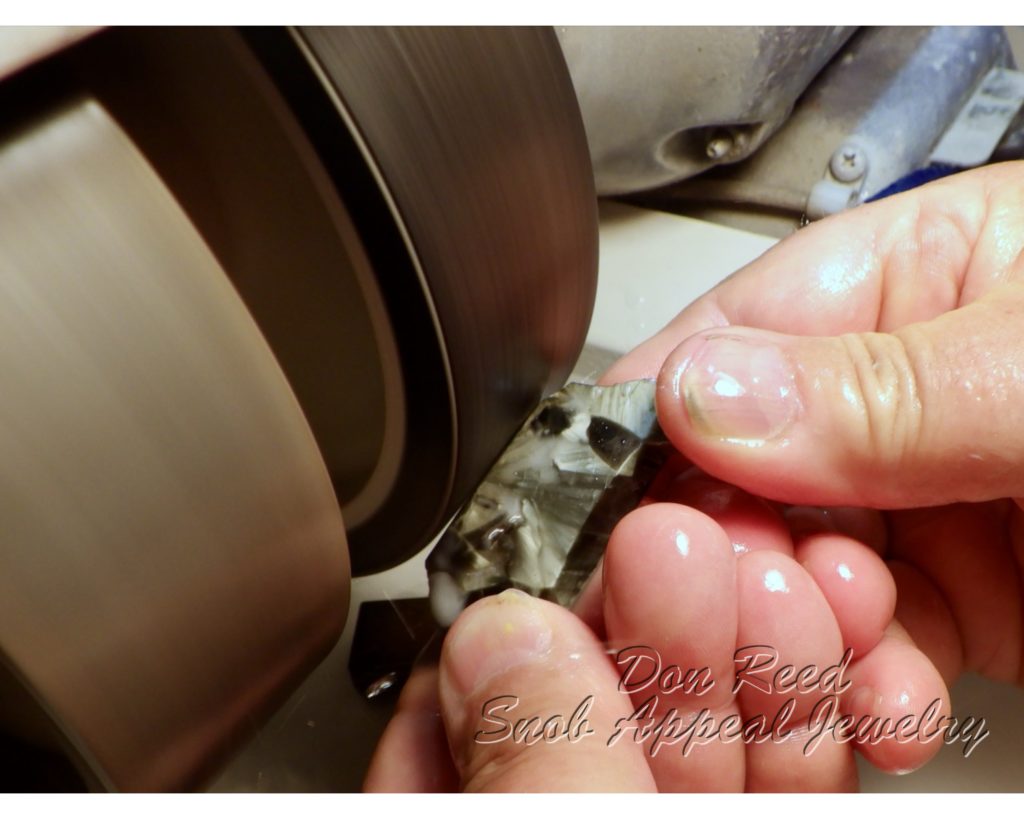
To say I was thrilled to find these treasures, after hiding for nearly 6 decades, is an understatement. Needless to say, they went right to the grinder. Grinding and polishing Victoria Stone can be challenging, but it waa like everything came back into focus. I was back in the mid-70s again, happily grinding and polishing Victoria Stone. Let’s throw on a little Disco Music and get to work!
Magically, there were three different Victoria Stone Blue colors in my finds– Sky Blue, Sky Indigo, and Deep Indigo. These three colors were all very popular. I also found a chunk of Black Victoria Stone; a distinctive color, and now more rare because it was not one of the most popular colors.
Gazing upon a polished piece of original Victoria Stone is such a treat. The crystallization, chatoyancy, and rich colors are just delicious. These pictures just do not do justice to this material.
Lapidary Stuff
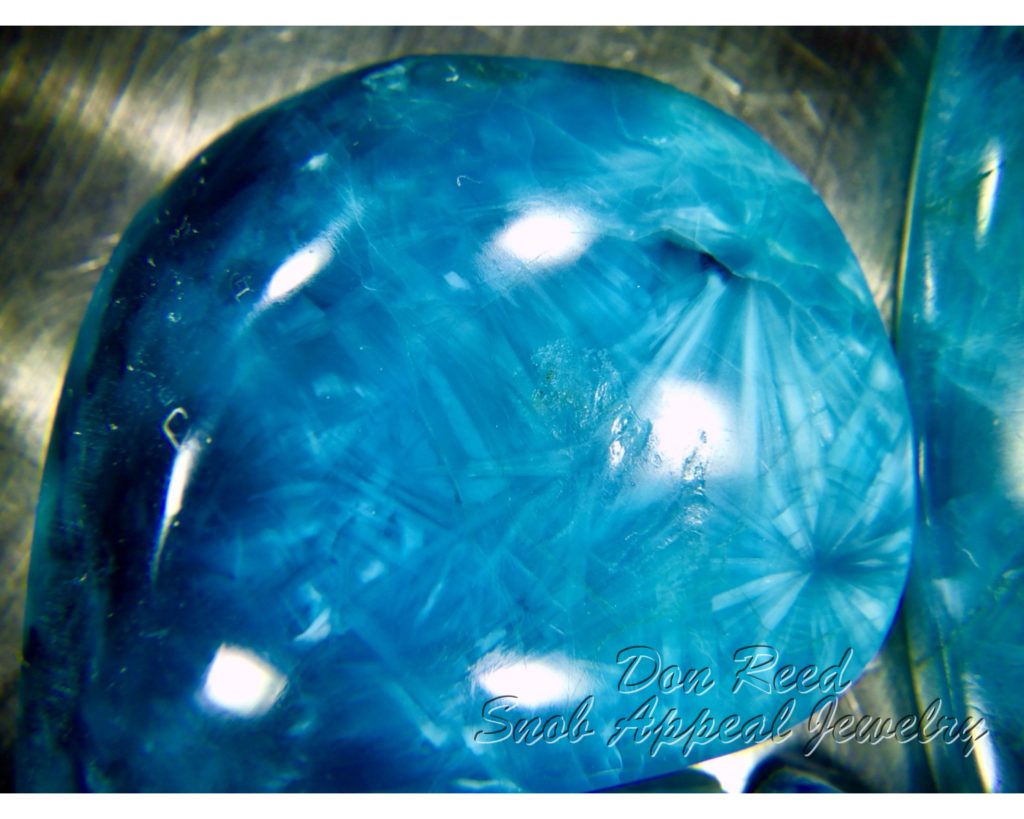
One of the blue slabs was a surprise because of its’ crystallization. The top of all the Victoria Stone Boules developed a star-like cross pattern ONLY the top of the boule developed this pattern. I’m not sure how this happened in Victoria Stone, but that first slab off the top of the boule was always the most coveted and rare slice. because of this rare crystallization. A Deep Indigo slab had this tell-tale pattern. I was doubly excited about this piece and took extra caution with it.
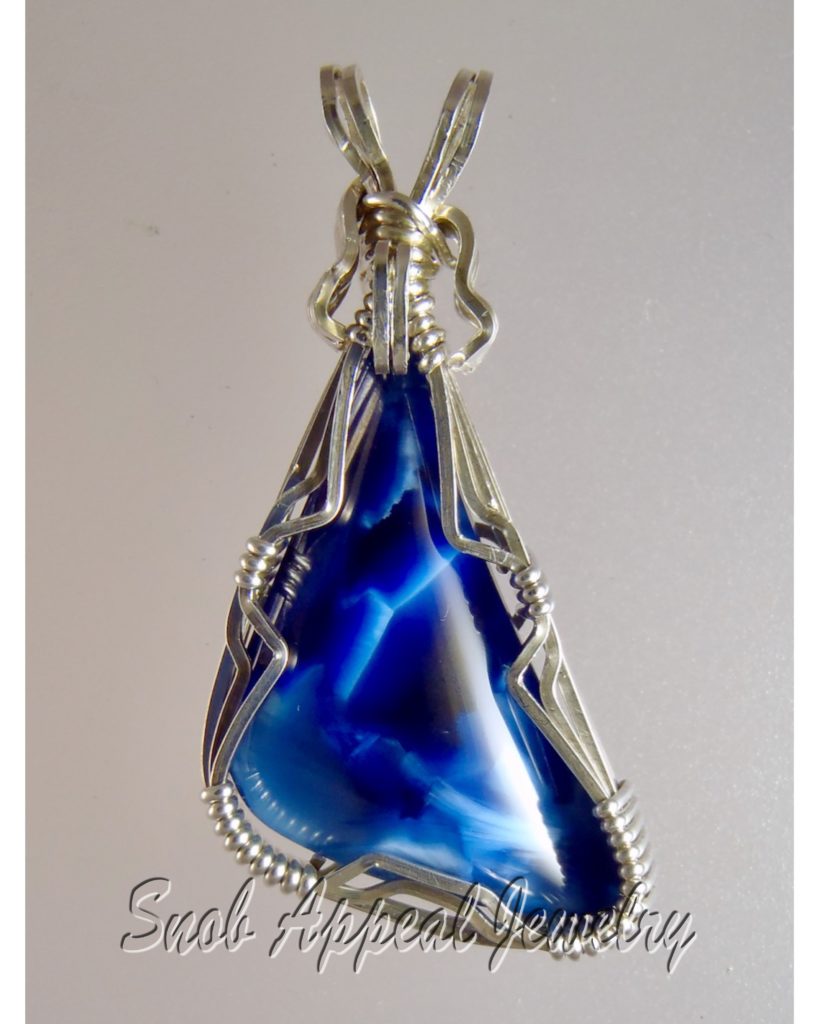
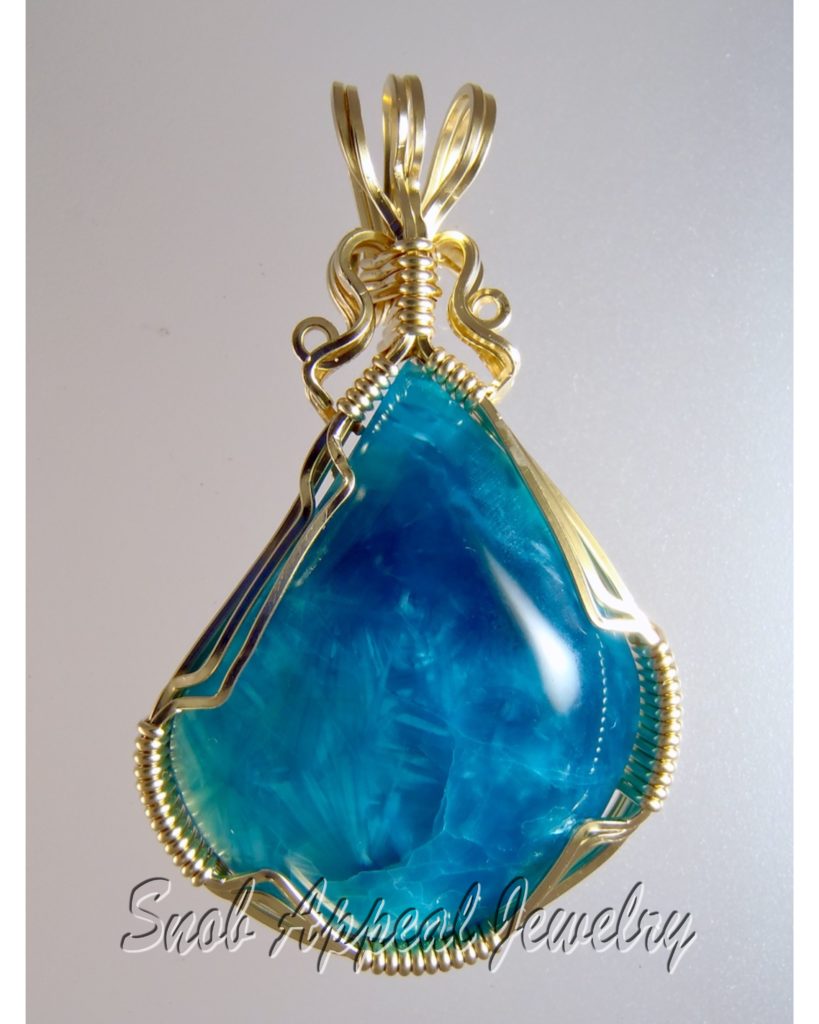
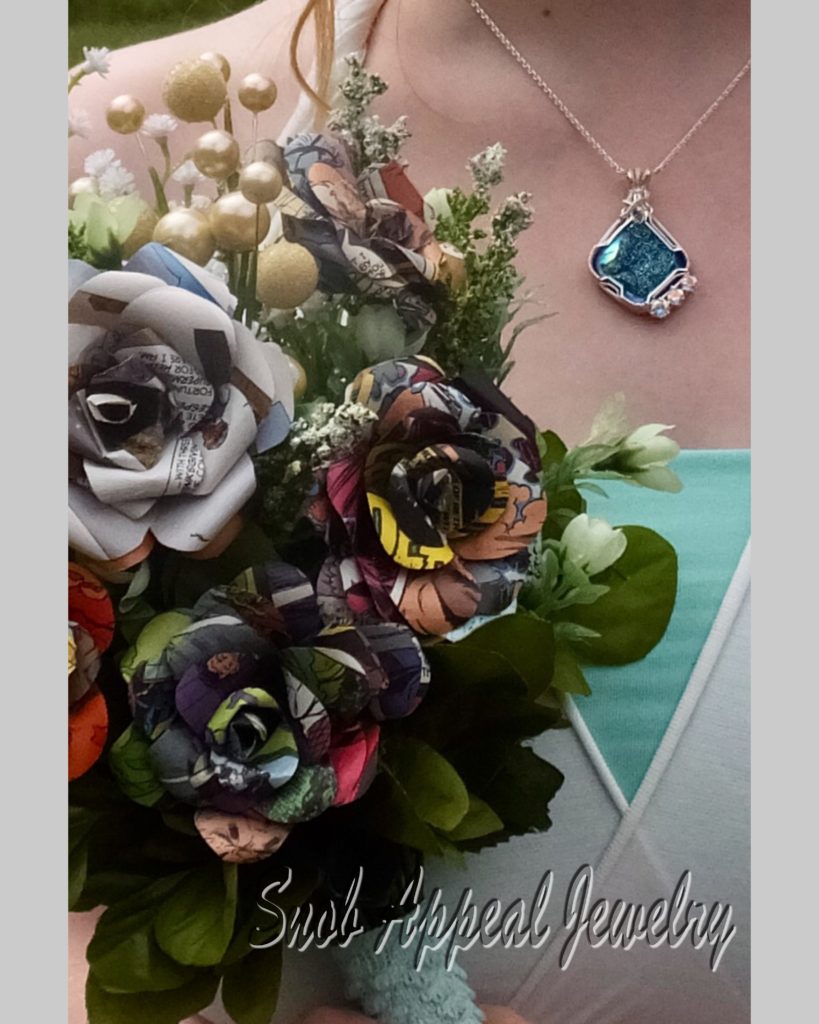
Victoria Stone is sensitive to harmonic vibrations of the hard genie wheels. I used an old, broken in, very smooth, perfectly balanced, Galaxy Wheel (220), then went to the 280 soft Nova wheel for most of the forming. I never recommend using a newer Galaxy Wheel for Victoria Stone, but I have one that is super smooth and true, so I got away with it. I can’t tell you how many times a nice Victoria Stone has become a victim of harmonics, but it’s not pretty when it happens. In addition, use lots of water and do not overheat Victoria Stone. My polishing involves white rouge and a high speed buff, being careful not to overheat the stone. It is safer to use a flat lap for polishing, if you have one.
My wife, Bonnie’s personal collection of Victoria Stone includes EIGHT Victoria Stone Pendants. If you asked her why she has so many pieces of VS jewelry, she would say ‘There are just so many colors and patterns’. she’s in a position to grab stuff off my workbench and claim it for her own. Not a problem with me; She’s been my best friend, and has put up with me for 45 years. We both agree that Victoria Stone is pretty special.


